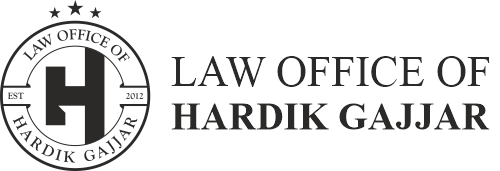- Call Us: +91-99789 02762
- Email Us: info@gajjarhardik.com
- Office: Motera,Ahmedabad,Gujarat-380005,India
Copyright Transfer & Assignment
Frequently Asked Questions
Copyright is a right given by the law to creators of literary, dramatic, musical and artistic works and producers of cinematograph films and sound recordings. In fact, it is a bundle of rights including, inter alia, rights of reproduction, communication to the public, adaptation and translation of the work. There could be slight variations in the composition of the rights depending on the work.
Copyright ensures certain minimum safeguards of the rights of authors over their creations, thereby protecting and rewarding creativity. Creativity being the keystone of progress, no civilized society can afford to ignore the basic requirement of encouraging the same. Economic and social development of a society is dependent on creativity. The protection provided by copyright to the efforts of writers, artists, designers, dramatists, musicians, architects and producers of sound recordings, cinematograph films and computer software, creates an atmosphere conducive to creativity, which induces them to create more and motivates others to create.
The Copyright Act, 1957 protects original literary, dramatic, musical and artistic works and cinematograph films and sound recordings from unauthorized uses. Unlike the case with patents, copyright protects the expressions and not the ideas. There is no copyright protection for ideas, procedures, methods of operation or mathematical concepts as such (Please see Article 9.2. of TRIPS).
Copyright does not ordinarily protect titles by themselves or names, short word combinations, slogans, short phrases, methods, plots or factual information. Copyright does not protect ideas or concepts. To get the protection of copyright a work must be original.
No. Acquisition of copyright is automatic and it does not require any formality. Copyright comes into existence as soon as a work is created and no formality is required to be completed for acquiring copyright. However, certificate of registration of copyright and the entries made therein serve as prima facie evidence in a court of law with reference to dispute relating to ownership of copyright.
Yes. Both published and unpublished works can be registered. Copyright in works published before 21st January, 1958, i.e., before the Copyright Act, 1957 came in force, can also be registered, provided the works still enjoy copyright.
Yes. Computer Software or programme can be registered as a ‘literary work’. As per Section 2 (o) of the Copyright Act, 1957 “literary work” includes computer programmes, tables and compilations, including computer databases. ‘Source Code’ and “Object Code” have also to be supplied along with the application for registration of copyright for software products.
A website may be understood as a webpage or set of interconnected webpages, hosted or stored on a server, and is made available online to members of public. Users can access the information and other underlying work on a website through various means such as scrolling webpages, using internal hypertext links or a search feature.
Website usually consists of different rudiments which may be copyrightable subject matter that falls within any one of the classes of works set forth in Section 13 of Copyright Act, 1957. The component parts of website can be in different form of digital files such as text, tables, computer programmes, compilations including computer databases (“literary works”); photographs, paintings, diagram, map, chart or plan (“artistic works”); works consisting of music and including graphical notation of such work (“musical works”); “sound recordings” and “cinematograph films”.
Website as a whole is not subject to copyright protection. Generally, non-copyrightable content particular to websites may include but are not limited to ideas or future plans of websites, functional elements of websites, unclaimable material, layout and format or ‘look and feel’ of a website or its webpage; or other common, unoriginal material such as names, icons or familiar symbols.
Originality is considered as ‘the bedrock principle of copyright’ and ‘the very premise of copyright law’. A work to be a copyrightable subject matter is to be created by the exercise of labour, skill and judgment of the author. Also, such exercise of efforts on the part of the author should not be trivial in nature and thus should not be a mere exercise of the mechanical function of copying the work of another. Variation must be substantial in nature than merely trivial thus requirement of degree of originality is quantitative in nature.
Certificates may be considered as a formal document or written assurance which states an official fact and are generally used as evidence for certain purposes. Certificates are usually monotonous as it contains mere common words or formats which are generic in nature. Certificates are not considered as copyrightable subject matter as it falls under the narrow category of works in which the creative spark is utterly lacking or so trivial as to be virtually non-existent.
An App is a complete, self-contained computer program that is designed to perform specific tasks. Usually called ‘Apps’ for short, application programs are the most familiar forms of software and come in a very wide variety of types. An App usually has primarily dynamic content and is designed for user interaction. It may be used directly or indirectly in a computer or hand held electronic device.
An App may be registered as a computer program under literary works as provided under Section 2(o) of the Copyright Act, 1957. For this purpose applicant is required to submit an application for registration under software category, accompanied by the source and object code as provided under Rule 70 (5) of the Copyright Rules 2013.
Stay Connected with Us !
We will notify new updates directly to your mail box..

